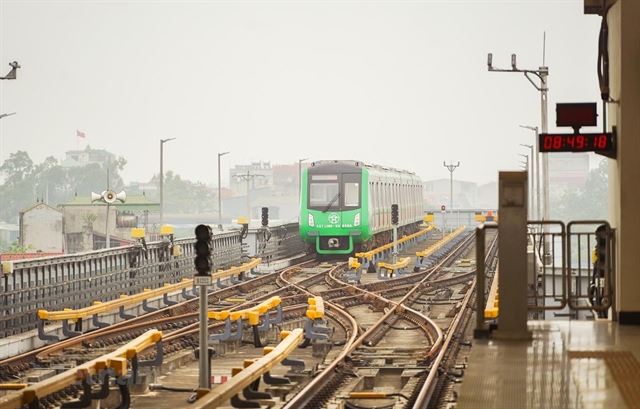 Politics & Law
Politics & Law


|
| Cát Linh - Hà Đông urban railway project started in October 2011 and experienced several delays and cost overruns with total investment adjusted from nearly VNĐ8.8 trillion ($381.3 million) to more than VNĐ20 trillion ($886 million). Photo vietnamplus.vn |
HÀ NỘI — The long-delayed Cát Linh - Hà Đông urban railway project needs an additional US$7.8 million for supervision and consulting costs, according to the Ministry of Transport.
In a recent document sent to the Ministry of Finance, the transport ministry said that the Engineering, Procurement and Construction (EPC) contract of the project could not be completed on schedule, causing delays and increasing the supervision and consulting cost by US$7.83 million.
The ministry also noted that the counterpart funds from Việt Nam are “very small” while the additional loan agreement of China totalled more than $26.4 million.
In April, the transport ministry requested the Export-Import Bank of China (China Eximbank) to consider and approve financing the supervision and consulting cost, but it was refused in August.
Funded by Chinese Official Development Aid (ODA), the total initial investment for the Cát Linh - Hà Đông urban railway project was VNĐ8.77 trillion ($381.3 million), which was then adjusted to more than VNĐ20 trillion ($886 million).
The project started in October 2011 and experienced several delays and cost overruns.
The progress of the railway project was on the agenda during a recent meeting between Vietnamese Deputy Prime Minister Phạm Bình Minh and Chinese State Councillor and Foreign Minister Wang Yi. At the meeting, Việt Nam asked China to proactively resolve issues and limitations in some cooperation projects including the Cát Linh - Hà Đông railway project.
The first metro line in Hà Nội will run from Cát Linh in the inner district of Ba Đình to the outlying district of Hà Đông.
The system is designed to have a main elevated line of more than 13km, 12 stations, and 13 trains. Each train, with a designed speed of up to 80km per hour, has four carriages capable of carrying more than 900 passengers. —VNS




